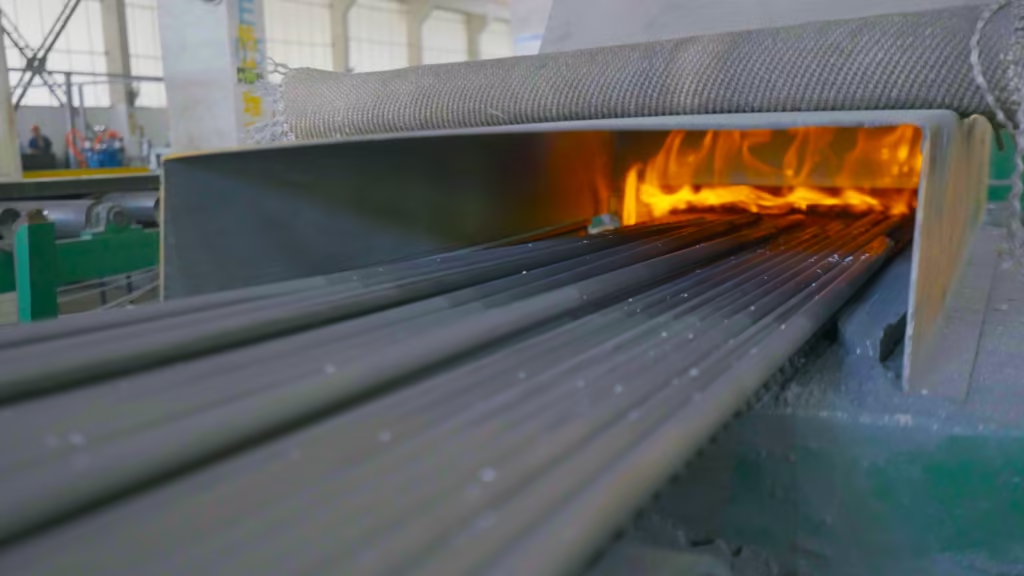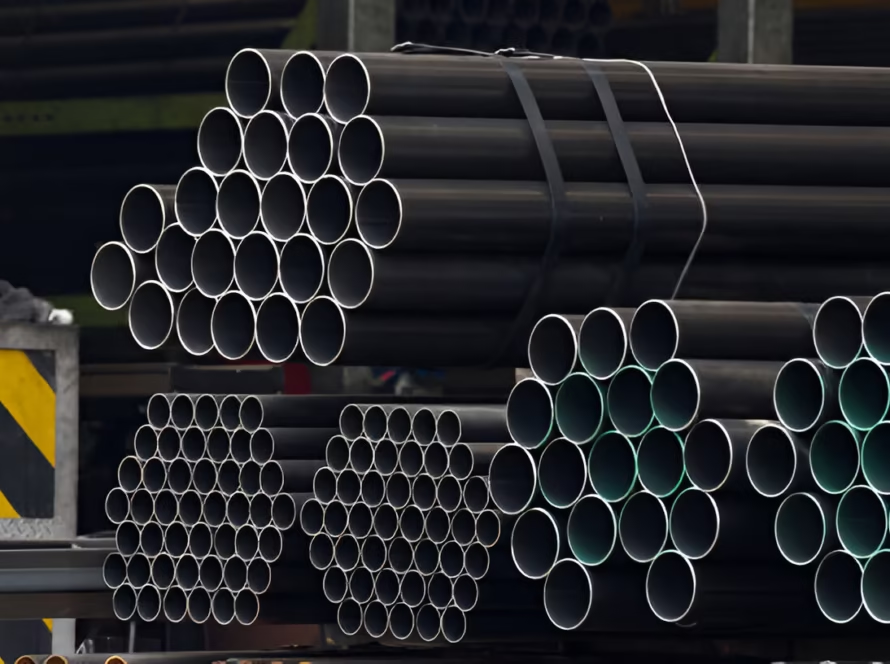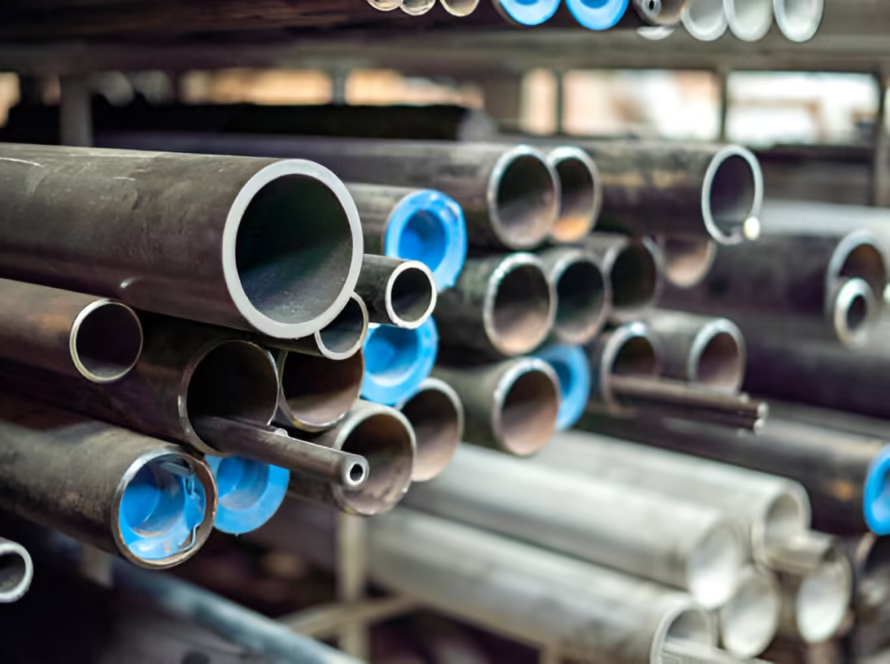What is the quenching and tempering of seamless pipes?
Quenching and tempering are critical heat treatment processes applied to seamless steel pipes to enhance their mechanical properties, ensuring they meet the rigorous demands of various industrial applications.
Quenching
This involves heating the steel pipe to a temperature above its critical point (typically between 800–900°C) to transform its microstructure into austenite. The pipe is then rapidly cooled, usually in water, oil, or brine, to convert the austenite into martensite—a hard, brittle phase. This process significantly increases the hardness and strength of the steel.
Tempering
After quenching, the steel pipe is reheated to a temperature below its critical point (commonly between 150–650°C) and held at that temperature for a specified duration. This controlled heating reduces internal stresses, decreases brittleness, and improves toughness and ductility, balancing the hardness achieved during quenching.
Why is quenching necessary for seamless steel pipes?
Quenching is essential to increase the hardness and strength of the steel pipe, making it suitable for applications that require high wear resistance and the ability to withstand heavy loads.
What are the common quenching media used?
The choice of quenching medium—water, oil, or brine—depends on the desired cooling rate and the steel’s composition. Water provides the fastest cooling but may induce more stress, while oil offers a slower, more controlled cooling process.
How does tempering affect the mechanical properties of steel pipes?
Tempering alleviates the brittleness induced by quenching, enhancing the steel’s toughness, ductility, and impact resistance. This process ensures that the steel pipe can perform reliably under varying operational conditions.
Applications of Quenched and Tempered Seamless Steel Pipes
Quenched and tempered seamless steel pipes are widely used in industries such as:
-
Oil and Gas: For drilling and casing pipes that endure high pressures and corrosive environments.
-
Construction: In structural applications requiring high strength and durability.
-
Automotive and Aerospace: For components subjected to dynamic loads and fatigue.
-
Heavy Machinery: In manufacturing equipment that operates under extreme conditions.
The heat treatment processes of quenching and tempering are vital in producing steel pipes that meet the stringent requirements of these industries.
Conclusion
The quenching and tempering processes are indispensable in the production of seamless steel pipes, imparting the necessary hardness, strength, and toughness to meet the diverse and demanding needs of various industries. Understanding these processes helps in selecting the appropriate steel pipe for specific applications, ensuring safety, reliability, and performance.







3 Comments
avijagtap
This article solved my problem very well
thorstendelamothe
Purely to follow up on the update of this subject on your web page
and would really want to let you know just how much I prized
the time you took to produce this helpful post.
In the post, yoou spoke of hoow to definitely handle this issue
with all convenience. It would be my personal pleasure to ollect some more tips
from your site and come up to offer other individuals what I
have benefited from you. I appreciate your usual trrific effort.
ojdjjcjegcpkc66
Плюсую за детальный разбор,
сам только что изучал подобное.